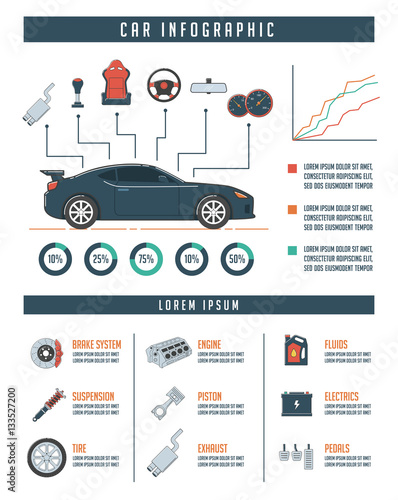Translating Your Automobile'S Alert Lighting: Their Real Implications
Translating Your Automobile'S Alert Lighting: Their Real Implications
Blog Article
Published By-Higgins Gilbert
When you're behind the wheel, those radiant caution lights on your dashboard can be a little bit difficult. Do you know what they're trying to inform you regarding your vehicle's wellness? Understanding the relevance of these lights is vital for your safety and the long life of your automobile. So, the next time among those lights appears, would not you intend to understand its message precisely and take the required steps to address it?
Common Caution Lights and Interpretations
Recognize common warning lights in your automobile and recognize their definitions to ensure risk-free driving.
One of the most common warning lights include the check engine light, which indicates issues with the engine or discharges system. If this light begins, it's important to have your automobile checked promptly.
The oil pressure cautioning light indicates low oil stress, requiring prompt interest to avoid engine damages.
https://www.prnewswire.com/news-releases/cox-automotive-acquires-trudell-parent-company-of-trudell-trailers-and-northeast-great-dane-301590813.html flashing battery light might recommend a damaged billing system, possibly leaving you stranded otherwise addressed.
The tire stress tracking system (TPMS) light alerts you to reduced tire pressure, impacting vehicle stability and fuel efficiency. Neglecting this might result in risky driving problems.
The abdominal muscle light shows a problem with the anti-lock stopping system, endangering your capacity to stop rapidly in emergencies.
Last but not least, the coolant temperature cautioning light warns of engine overheating, which can lead to extreme damage otherwise fixed quickly.
Recognizing these typical warning lights will aid you attend to problems promptly and maintain secure driving problems.
Importance of Prompt Interest
Understanding the common caution lights in your vehicle is only the initial step; the relevance of without delay resolving these cautions can't be highlighted enough to guarantee your safety on the road.
When a caution light illuminates on your control panel, it's your vehicle's method of communicating a potential problem that needs interest. Overlooking these warnings can result in more serious issues in the future, endangering your safety and security and potentially costing you more out of commission.
Prompt attention to advising lights can protect against breakdowns and mishaps. For example, a blinking check engine light can show a misfire that, if left neglected, could create damages to the catalytic converter. Addressing this quickly can conserve you from a pricey repair service.
Likewise, a brake system alerting light could signal reduced brake liquid or worn brake pads, crucial elements for your safety and security when driving.
DIY Troubleshooting Tips
If you discover a warning light on your dashboard, there are a couple of DIY troubleshooting tips you can attempt before seeking professional assistance.
The very first step is to consult your cars and truck's handbook to understand what the details warning light shows. Sometimes best mobile car detailing near me can be as straightforward as a loosened gas cap setting off the check engine light. Tightening up the gas cap might deal with the issue.
Another usual issue is a low battery, which can trigger various alerting lights. Inspecting the battery connections for deterioration and guaranteeing they're safe and secure may repair the trouble.
If a warning light continues, you can attempt resetting it by disconnecting the automobile's battery for a couple of minutes and after that reconnecting it. In addition, checking your automobile's liquid degrees, such as oil, coolant, and brake liquid, can aid repair alerting lights associated with these systems.
Conclusion
To conclude, recognizing your automobile's caution lights is important for maintaining your vehicle running smoothly and securely. By without delay dealing with these signals and understanding what they suggest, you can stay clear of costly fixings and prospective malfunctions.
Remember to consult your vehicle's handbook for particular information on each warning light and act as necessary to make sure a trouble-free driving experience.
Stay notified, stay risk-free when driving!
